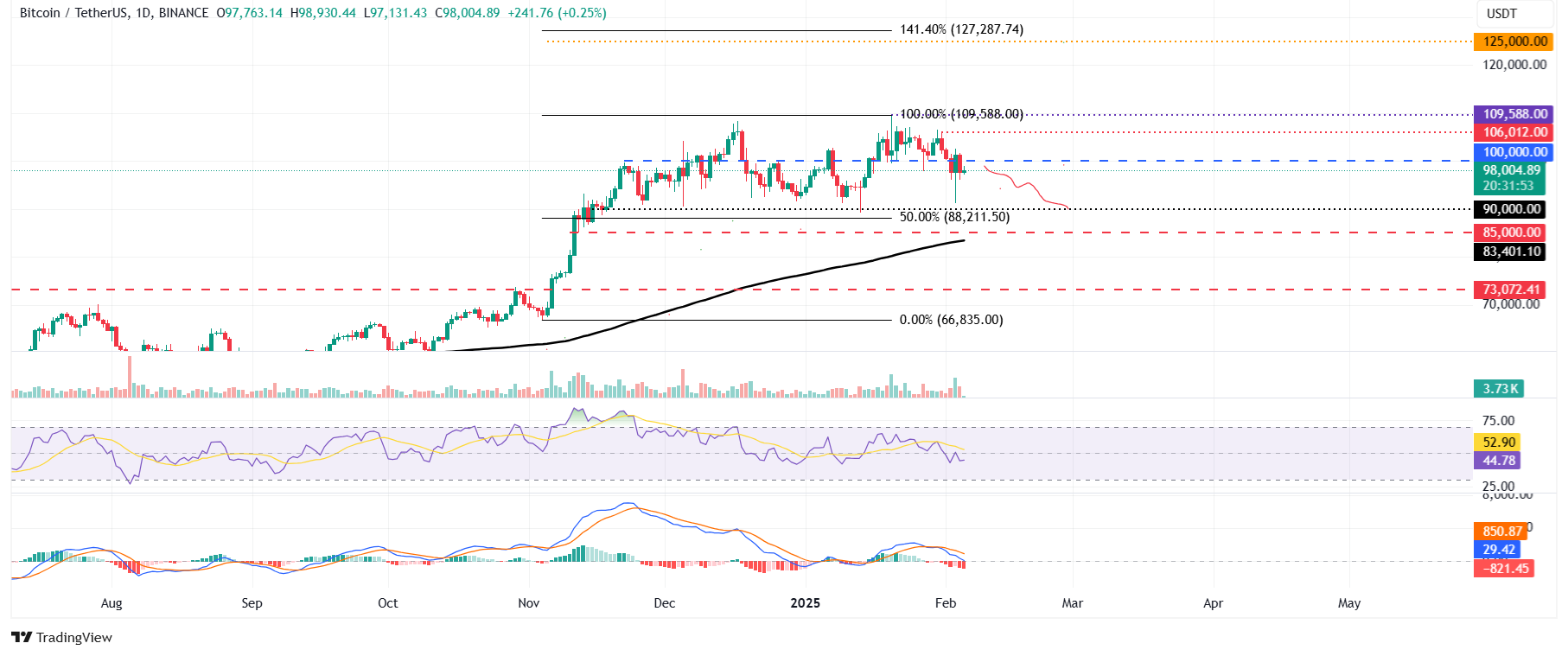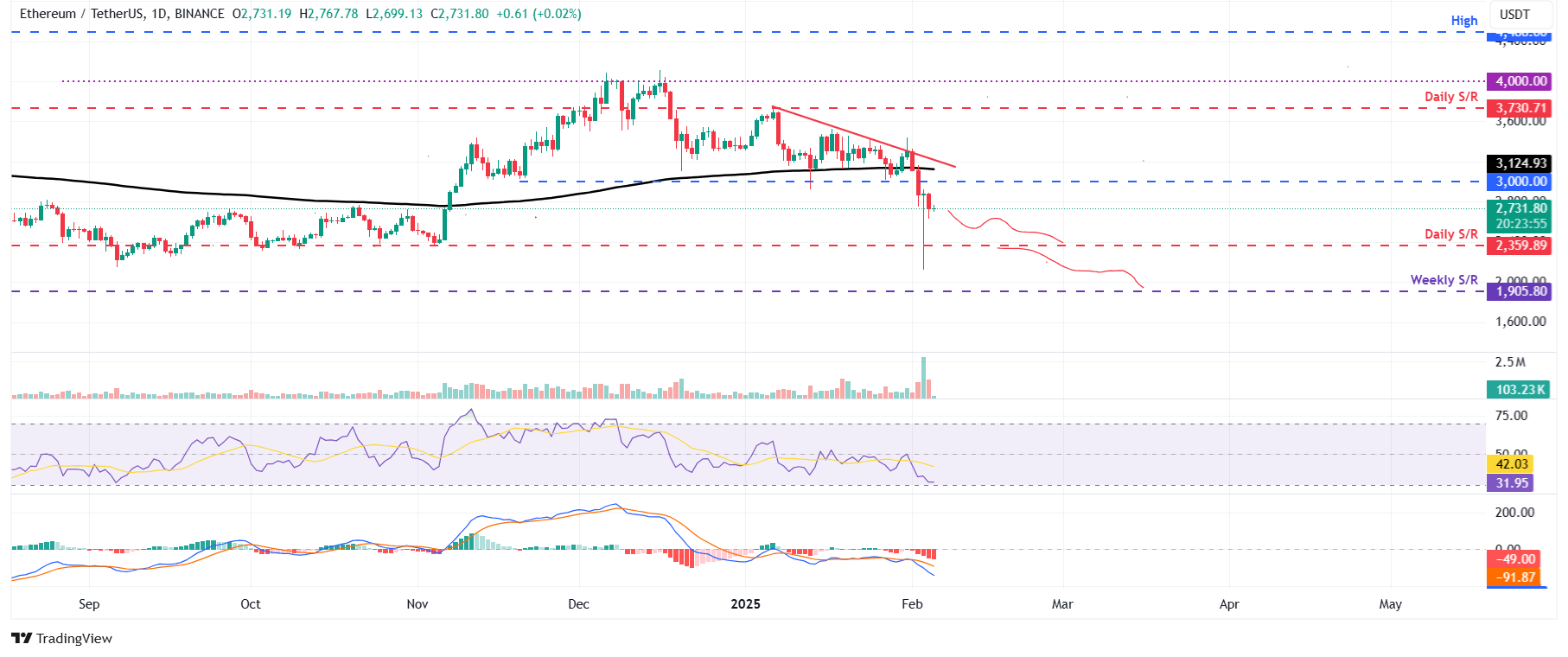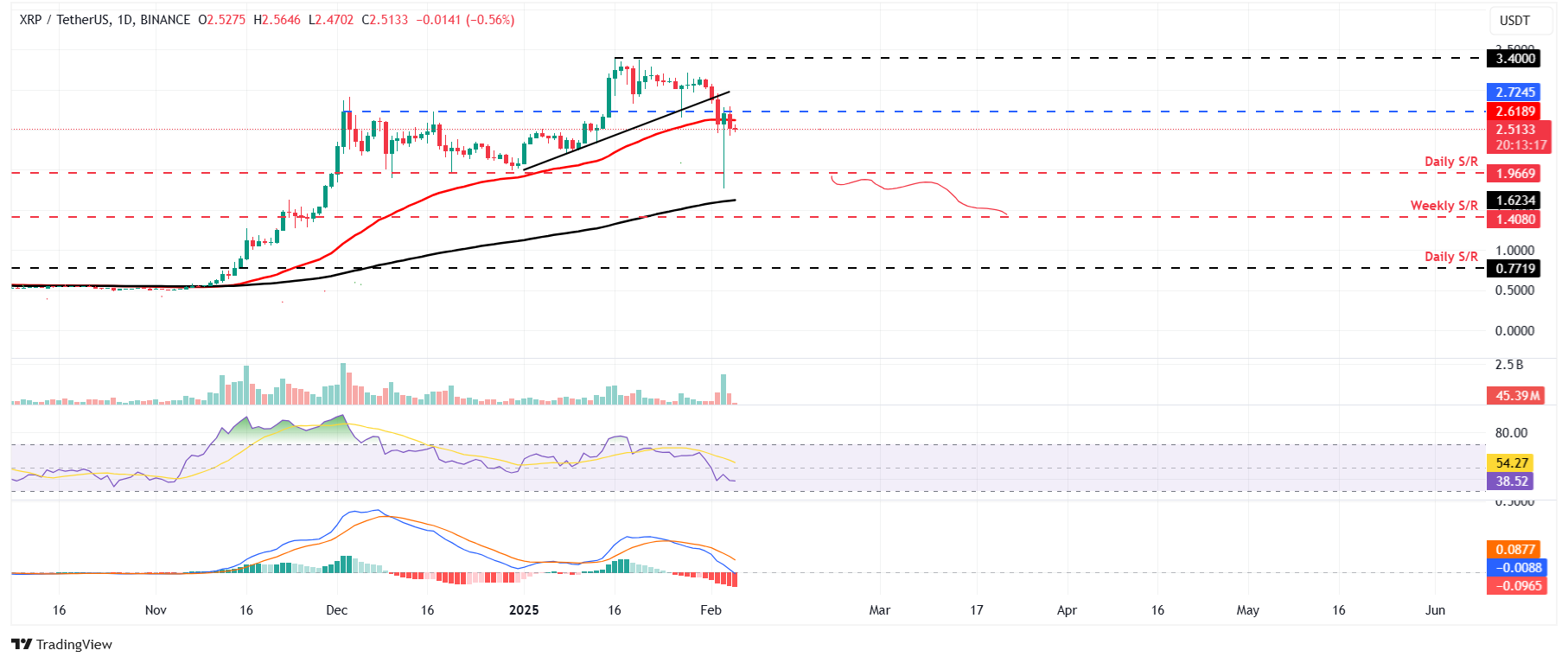Top 3 Price Prediction Bitcoin, Ethereum, Ripple: BTC, ETH and XRP still show signs of weakness
- Bitcoin hovers around $98,000 on Wednesday after falling 3.5% the previous day.
- Ethereum price failed to recover, trading around $2,700, hinting at a downleg ahead.
- Ripple price closes below its ascending trendline, changing the market structure from bullish to bearish.
Bitcoin (BTC), Ethereum (ETH) and Ripple (XRP) hover around key levels on Wednesday after failing to maintain their recoveries from the recent falls this week. The technical outlook for all these top cryptocurrencies shows signs of weakness and suggests a further correction ahead.
Bitcoin fails to maintain levels above $100,000
Bitcoin price faced a pullback in the early Asian trading session, reaching a low of $91,231, but quickly recovered from its fall to close above $101,300 on Monday. However, it failed to maintain its recovery and declined 3.52% on Tuesday. At the time of writing on Wednesday, it hovers around $98,000.
If BTC continues its correction, it could extend the decline to test its psychologically important level of $90,000.
The Relative Strength Index (RSI) on the daily chart reads 44, after being rejected from below its neutral level of 50, and points downwards, indicating a strong bearish momentum. Moreover, the Moving Average Convergence Divergence (MACD) showed a bearish crossover, hinting at further correction.

BTC/USDT daily chart
However, if BTC recovers and finds support around $100,000, it would extend the recovery to retest its Friday high of $106,012.
Ethereum bears aiming for $2,300 level
Ethereum price faced a rejection around its descending trendline on Saturday and declined 13.87%, closing below its $3,000 psychologically important level the next day. On Monday, ETH dips and reaches a low of $2,125 but quickly recovers to close at $2,879. However, it failed to maintain its recovery and declined 5.16% on Tuesday. At the time of writing on Wednesday, it hovers around $2,731.
If ETH continues its decline and closes below $2,359, it will extend the decline to test its next weekly support at $1,905.
The RSI on the daily chart reads 31, nearing its oversold level of 30, indicating a strong bearish momentum. The MACD also continues to show a bearish crossover, suggesting the continuation of a bearish trend.

ETH/USDT daily chart
On the other hand, if ETH recovers, it could extend the recovery to test its $3,000 level.
Ripple price is set for a downward move as it closes below its ascending trendline
Ripple price breaks below its ascending trendline (drawn by connecting multiple lows since early January) on Sunday and declines by 10.35%, closing below its 50-day EMA at $2.60. On Monday, Ripple dips and reaches a low of $1.77 but quickly recovers to close at $2.70. However, it failed to maintain its recovery and declined 6.40% on Tuesday. At the time of writing on Wednesday, it hovers around $2.51.
If XRP continues its pullback and closes below its daily support at $1.96. It could extend the decline to test its weekly support level at $1.40.
The RSI on the daily chart reads 38, around its oversold level of 30, indicating a strong bearish momentum. The MACD also continues to show a bearish crossover, suggesting the continuation of a bearish trend.

XRP/USDT daily chart
However, if XRP recovers, it could extend the recovery to test its daily resistance level at $2.72.
Bitcoin, altcoins, stablecoins FAQs
Bitcoin is the largest cryptocurrency by market capitalization, a virtual currency designed to serve as money. This form of payment cannot be controlled by any one person, group, or entity, which eliminates the need for third-party participation during financial transactions.
Altcoins are any cryptocurrency apart from Bitcoin, but some also regard Ethereum as a non-altcoin because it is from these two cryptocurrencies that forking happens. If this is true, then Litecoin is the first altcoin, forked from the Bitcoin protocol and, therefore, an “improved” version of it.
Stablecoins are cryptocurrencies designed to have a stable price, with their value backed by a reserve of the asset it represents. To achieve this, the value of any one stablecoin is pegged to a commodity or financial instrument, such as the US Dollar (USD), with its supply regulated by an algorithm or demand. The main goal of stablecoins is to provide an on/off-ramp for investors willing to trade and invest in cryptocurrencies. Stablecoins also allow investors to store value since cryptocurrencies, in general, are subject to volatility.
Bitcoin dominance is the ratio of Bitcoin's market capitalization to the total market capitalization of all cryptocurrencies combined. It provides a clear picture of Bitcoin’s interest among investors. A high BTC dominance typically happens before and during a bull run, in which investors resort to investing in relatively stable and high market capitalization cryptocurrency like Bitcoin. A drop in BTC dominance usually means that investors are moving their capital and/or profits to altcoins in a quest for higher returns, which usually triggers an explosion of altcoin rallies.



